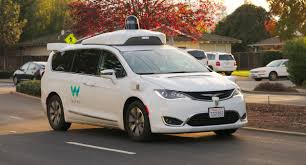

It started out as “you’re in the saddle.” Later, as cars replaced horses and buggies, the figure of speech would change to” you’re in the driver’s seat.” In both cases, the terms were used to acknowledge a person’s authority, that they were in charge or that everything was under control.

There will come a day when neither of these will have meaning to the majority of people. Whether we are ready or not, we are rapidly moving towards a day where cars will no longer be operated by humans, but instead by computers.
December of 2018 may soon be remembered as the beginning of the transition to autonomous or driverless cars. This is the month when Waymo, a Google spinoff, started the first self-driving taxi service. Operating in the suburbs of Phoenix Waymo One is being met with mixed greetings.
Some envision a transition similar to when we went from the horse and buggy to the horseless carriage. Others anticipate more sweeping changes. Not only will we use self-driving vehicles, but the need to own autos will be eliminated. Their model for the future of auto transportation is driven by estimates that expenses for taxi services will drop by as much as 70% when vehicles no longer require drivers. With a new abundance of taxis, American consumers will always be within minutes of an autonomous car. Additional taxi owners will pass on much of their saving to consumers make it impractical to own a car.
The Proponent’s View

Imagine being able to eliminate standing in line at the DMV to license or register your vehicle. How about never having to pump gas again, or even better you will never need car insurance again. There will be no need for maintenance, you no longer make payments for your car loan and parking garages will be a thing of the past.
This group will also argue the benefits associated when potential human err is no longer part of the equation. They will conclude that driverless cars will be a safer way to commute.
A War is Brewing
Given the initial results in Phoenix, it’s my guess that those In favor of autonomous vehicles are in the minority. Reports are common of drivers intentionally trying to cause malfunctions and attempting to force driverless cars off the road. There have even been reports of guns being pulled on occupants of Waymo vans. Why are these drivers so upset?
It’s not about protecting the status quo, it’s about protecting our families!
Why aren’t more people upset about the string of deathsrelated to autonomous vehicles. It hasme concerned and apparently, a lot of folk in Arizona are too. It would appear that many of us are worried that we are moving too fast. Better said, that our government is failing to protect us.
Those in favor of driverless cars will argue that the autonomous auto will cut motor vehicle accidents by 80%, maybe as high as 90%. The key word being will. The autonomous car is not ready for primetime. Given recent results, it’s not even close to being street ready.
Self-driving cars are over 30 times more deadly than current cars and drivers. Where is our government that predicts us from everything else? Obviously not in Arizona! This is where you will find frustrated citizens that have every right to be upset. Sure pointing a gun at someone is not a solution, it is just adding to the problem. But allowing a computer to access the streets of Phoenix is equivalent of playing Russian roulette with two bullets. Why is this being allowed? Why aren’t the people being heard?


 Contact
Contact
 Email an Agent
Email an Agent

 Click to Call
Click to Call Get Directions
Get Directions


